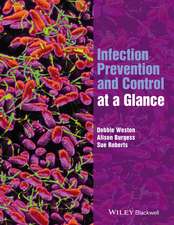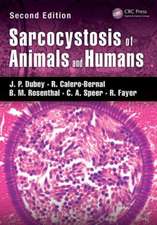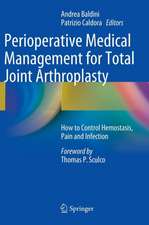Viral Zoonoses and Food of Animal Origin: A Re-Evaluation of Possible Hazards for Human Health: Archives of Virology. Supplementa, cartea 13
Editat de Oskar-Rüger Kaaden, Claus-Peter Czerny, Werner Eichhornen Limba Engleză Paperback – 10 noi 1997
| Toate formatele și edițiile | Preț | Express |
|---|---|---|
| Paperback (1) | 1102.31 lei 6-8 săpt. | |
| SPRINGER VIENNA – 10 noi 1997 | 1102.31 lei 6-8 săpt. | |
| Hardback (1) | 1114.35 lei 6-8 săpt. | |
| SPRINGER VIENNA – 7 noi 1997 | 1114.35 lei 6-8 săpt. |
Din seria Archives of Virology. Supplementa
-
 Preț: 404.29 lei
Preț: 404.29 lei -
 Preț: 428.56 lei
Preț: 428.56 lei -
 Preț: 391.40 lei
Preț: 391.40 lei - 5%
 Preț: 381.54 lei
Preț: 381.54 lei - 5%
 Preț: 1313.93 lei
Preț: 1313.93 lei - 18%
 Preț: 961.55 lei
Preț: 961.55 lei - 24%
 Preț: 820.00 lei
Preț: 820.00 lei -
 Preț: 393.52 lei
Preț: 393.52 lei - 5%
 Preț: 1014.10 lei
Preț: 1014.10 lei - 15%
 Preț: 600.26 lei
Preț: 600.26 lei - 18%
 Preț: 1234.94 lei
Preț: 1234.94 lei -
 Preț: 397.76 lei
Preț: 397.76 lei - 5%
 Preț: 384.80 lei
Preț: 384.80 lei -
 Preț: 414.30 lei
Preț: 414.30 lei -
 Preț: 399.29 lei
Preț: 399.29 lei -
 Preț: 401.24 lei
Preț: 401.24 lei -
 Preț: 401.03 lei
Preț: 401.03 lei -
 Preț: 424.33 lei
Preț: 424.33 lei
Preț: 1102.31 lei
Preț vechi: 1160.32 lei
-5% Nou
Puncte Express: 1653
Preț estimativ în valută:
210.92€ • 220.22$ • 174.57£
210.92€ • 220.22$ • 174.57£
Carte tipărită la comandă
Livrare economică 04-18 aprilie
Preluare comenzi: 021 569.72.76
Specificații
ISBN-13: 9783211830147
ISBN-10: 3211830146
Pagini: 272
Ilustrații: VIII, 256 p.
Dimensiuni: 210 x 280 x 14 mm
Greutate: 0.62 kg
Ediția:Softcover reprint of the original 1st ed. 1997
Editura: SPRINGER VIENNA
Colecția Springer
Seria Archives of Virology. Supplementa
Locul publicării:Vienna, Austria
ISBN-10: 3211830146
Pagini: 272
Ilustrații: VIII, 256 p.
Dimensiuni: 210 x 280 x 14 mm
Greutate: 0.62 kg
Ediția:Softcover reprint of the original 1st ed. 1997
Editura: SPRINGER VIENNA
Colecția Springer
Seria Archives of Virology. Supplementa
Locul publicării:Vienna, Austria
Public țintă
ResearchCuprins
Cowpox: a re-evaluation of the risks of human cowpox based on new epidemiological information.- Characterization of a cowpox-like orthopox virus which had caused a lethal infection in man.- Molecular genetic analyses of parapoxviruses pathogenic for humans.- Recent advances in molluscum contagiosum virus research.- Molecular anatomy of lymphocystis disease virus.- Detection of virus or virus specific nucleic acid in foodstuff or bioproducts — hazards and risk assessment.- Rapid molecular detection of microbial pathogens: breakthroughs and challenges.- Where do we stand with oral vaccination of foxes against rabies in Europe?.- Foot-and-mouth disease as zoonosis.- Molecular epidemiology of influenza.- Influenza virus: transmission between species and relevance to emergence of the next human pandemic.- Functional chimeric HN glycoproteins derived from Newcastle disease virus and human parainfluenza virus-3.- Viral factors determining rotavirus pathogenicity.- Viral zoonoses and food of animal origin: caliciviruses and human disease.- The role of human caliciviruses in epidemic gastroenteritis.- Clinical similarities and close genetic relationship of human and animal Borna disease virus.- Molecular characterization of Borna disease virus from naturally infected animals and possible links to human disorders.- Haemorrhagic fevers and ecological perturbations.- Transmission, species specificity, and pathogenicity of Aujeszky’s disease virus.- The role of veterinary public health in the prevention of zoonoses.- Viral infections transmitted by food of animal origin: the present situation in the European Unio.- Viral zoonosis from the viewpoint of their epidemiological surveillance: tick-borne encephalitis as a model.- Strategies to avoid virus transmissions bybiopharmaceutic products.








